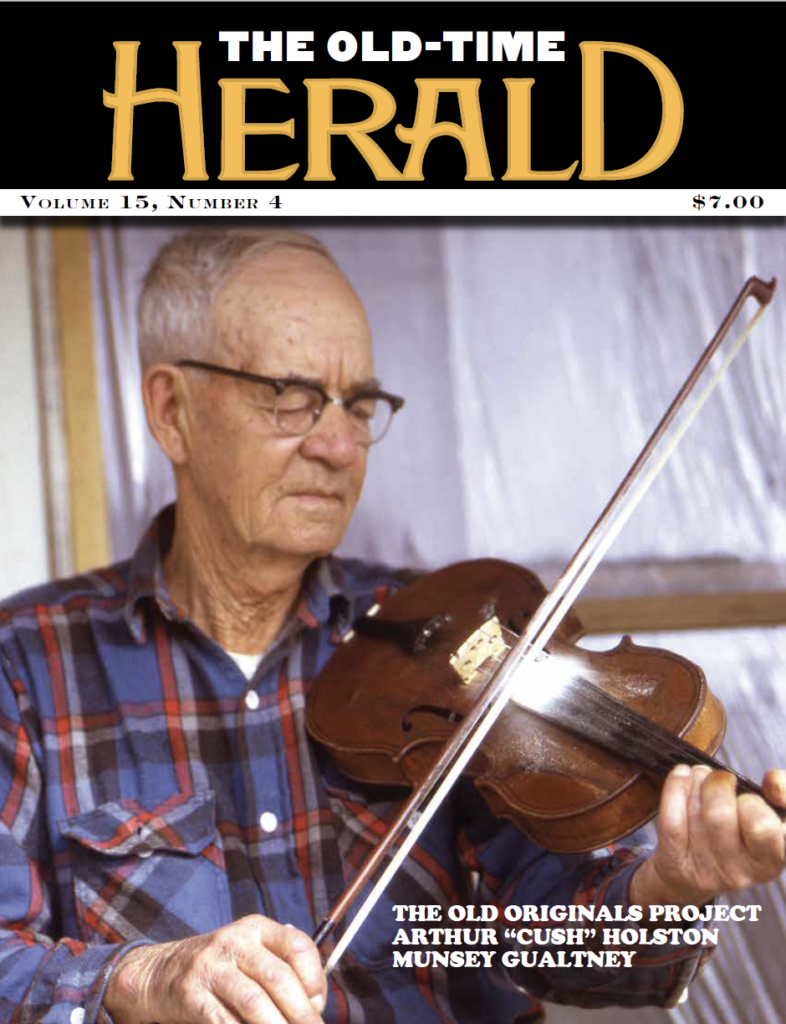For the first five years or so that Nora Brown was performing, starting around 2014, she was billed as “Little Nora Brown.” During those years, she won first place junior ribbons at Clifftop and even placed 3rd overall in 2018. With the passage of time, she is now simply Nora Brown. She is, obviously, a good banjo player, but she is also a very good singer, with a strong alto voice.
On this CD (which is the CD version of a vinyl record) we find an enjoyable eclectic mixture of songs and tunes from Appalachian and Black traditions. With only seven cuts, there is space to discuss most of the songs and tunes played.
Knowing that the opening piece was “8th of January” I expected the standard melody which Jimmy Driftwood used for his “Battle of New Orleans” hit. It wasn’t. Moreover, it wasn’t among the six melodies transcribed under that name in The Milliner-Koken Collection of American Fiddle Tunes, although it was pretty close to John Lusk’s version. What it was, was a very strong rhythmic, pentatonic, two-part two-chord melody, new to my ears, and credited to Frazier and Patterson, who appear on the Altamont CD. This makes a very good fiddle-banjo duet!
“Frankie and Albert” she credits to John Haywood, although I could hear echoes of Mississippi John Hurt. Somehow, the interplay between banjo and voice was very compelling and really drew me in. She plays this in fingerstyle banjo in an open D tuning.
“Liza Jane” is played in clawhammer style on a gut-string fretless banjo, at breakneck speed, again blending banjo and vocal seamlessly. The tune is that of “Scarlet town is falling down,” not the “Oh, Eliza, little Liza Jane” from the minstrel tradition. Paxton adds bones to this track, but there were times when the rhythm of the bones seemed to be out of phase with Brown’s banjo.
“The Very Day I’m Gone,” which she learned from the music of Kentucky singer Addie Graham, is a variation of Hedy West’s “500 Miles” (which you probably heard from Peter, Paul and Mary), and was my favorite track on this CD. It was familiar and new at the same time.
“Wedding Dress,” attributed to John Cohen, was a different tune than the one I learned from Peggy Seeger; I wonder where John got it? (I wish there had been more information in the liner notes, but you can only squeeze so much onto the back cover of a CD.)
“Green Valley Waltz” is little changed from the McCartt Brothers’ 1928 recording, words and all!
“Briggs Hop Light Hornpipe Medley” refers to Briggs Banjo Instructor, which was published before the Civil War and has been reprinted in modern times. The early stroke-style (downpicking) is used here to play two tunes on a fretless banjo. The second one is the familiar “Hop High Ladies.” Both are accompanied by bones.
This CD was fun to listen to and I recommend it to OTH readers. Admiration from one banjo player to another: Brown plays in the old stroke-style downpicking, in modern clawhammer, and in fingerstyle, and they all sound both good and well-matched to the tunes. And, as mentioned before, she is a good singer.


Leave a Reply